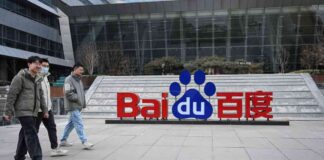AI’s Potential to Transform Klarna’s Workforce
As the world of technology continues to advance at an unprecedented pace, companies across various industries are leveraging artificial intelligence (AI) to streamline operations and increase efficiency. One such company making waves in the financial technology sector is Klarna, a “buy now, pay later” startup that has set its sights on utilizing AI to revolutionize its workforce.
In a recent interview with The Financial Times, Klarna CEO Sebastian Siemiatkowski revealed the company’s ambitious plan to cut its workforce in half through the implementation of AI technology. Siemiatkowski stated that Klarna aims to reduce its current staff of 3,800 employees to just 2,000 within the next few years. Rather than resorting to mass layoffs, Klarna has opted for a hiring freeze, refusing to fill positions left vacant by departing employees.
Siemiatkowski emphasized that by refraining from hiring new personnel since September, Klarna is gradually downsizing its workforce. Despite the reduction in staff numbers, the company has managed to increase its revenue per employee by an impressive 73% year-over-year. This remarkable feat underscores the potential of AI to enhance productivity and enable companies to achieve more with fewer resources.
The Role of AI in Klarna’s Transformation
According to Siemiatkowski, the remaining employees at Klarna will be supported by AI technology to assist them in their daily tasks. The integration of AI tools is expected to empower employees to accomplish more with greater efficiency. Klarna’s AI assistant has already demonstrated its capabilities by performing tasks equivalent to 700 full-time customer service agents, significantly reducing customer inquiry response times from 11 minutes to just two minutes.
The company’s decision to leverage AI has not only optimized customer service operations but has also extended to other departments within the organization. Siemiatkowski revealed that Klarna’s in-house marketing team, which was previously twice its current size, has been able to produce more impactful campaigns while reducing costs by $6 million through the use of AI technology.
With the successful implementation of AI across various functions, Klarna has been able to achieve sustainable growth and operational efficiency. The company’s second-quarter earnings report for 2024 showcased a significant uptrend in revenue and operating income, with a 17% and 21% year-over-year increase, respectively. This consistent growth trajectory underscores the effectiveness of Klarna’s AI-driven approach in driving business success.
The Impact of AI on the Workforce
While the integration of AI has undoubtedly brought about operational improvements and cost savings for Klarna, it has also raised concerns about the future of the workforce. With the company’s plan to reduce its staff by almost half, questions have been raised about the potential impact on employees and job security. As AI continues to evolve and automate tasks traditionally performed by humans, the workforce landscape is undergoing a significant transformation.
Despite the apprehensions surrounding job displacement, Siemiatkowski remains optimistic about the benefits of AI in enhancing employee productivity and driving business growth. He believes that AI has the potential to revolutionize the way companies operate, enabling them to achieve more with fewer resources. By empowering employees with AI tools, organizations can leverage their workforce more effectively and focus on strategic initiatives that drive value creation.
Challenges and Opportunities in the AI Era
The advent of AI presents both challenges and opportunities for companies like Klarna. While AI technology offers immense potential to drive innovation and efficiency, it also poses challenges in terms of workforce restructuring and upskilling. As companies adopt AI solutions to automate routine tasks, there is a growing need for employees to acquire new skills and adapt to the changing technological landscape.
Klarna’s transition to an AI-driven workforce serves as a testament to the transformative power of technology in reshaping traditional business models. By embracing AI, companies can unlock new opportunities for growth and competitive advantage. However, this shift also necessitates a strategic approach to workforce management, ensuring that employees are equipped with the skills and resources needed to thrive in an AI-driven environment.
The Future of Work in the AI Age
As AI continues to permeate various industries, the future of work is poised for significant changes. Companies like Klarna are at the forefront of this transformation, leveraging AI to drive operational efficiencies and enhance customer experiences. While AI has the potential to revolutionize business processes, it also raises important questions about the role of humans in a technology-driven world.
In the face of AI disruption, companies must prioritize workforce development and reskilling initiatives to ensure that employees remain relevant and competitive in the digital age. By investing in employee training and upskilling programs, companies can empower their workforce to adapt to the evolving technological landscape and thrive in a rapidly changing business environment.
Looking Ahead: Klarna’s IPO Plans and Beyond
Klarna’s strategic shift towards an AI-driven workforce comes at a pivotal moment as the company explores the possibility of an initial public offering (IPO) in the U.S. market. With a projected valuation of $20 billion, Klarna’s IPO could mark a significant milestone in the company’s growth trajectory and solidify its position as a key player in the financial technology sector.
As Klarna continues to innovate and expand its AI capabilities, the company is poised to unlock new opportunities for growth and market expansion. By leveraging AI to drive operational efficiencies and enhance customer experiences, Klarna is well-positioned to thrive in an increasingly competitive landscape.
In conclusion, Klarna’s journey towards an AI-driven workforce underscores the transformative power of technology in reshaping business operations and driving sustainable growth. By harnessing the potential of AI, companies can optimize their resources, enhance productivity, and deliver superior customer experiences. As the era of AI continues to unfold, organizations must embrace innovation and adapt to the changing technological landscape to remain competitive and thrive in the digital age.






















